Snowdrops are the first spring mosses familiar to us since childhood. Touching and gentle primrose symbolizes the end of winter and gives hope for a new life. A bouquet of gentle snowdrops or a plant planted in a pot is made to give women on the eve of the female spring holiday. The scientific name of the flower - Galantus (Galanthus), which is translated - "Milk flower". The British call him a snowy drop, and the Germans are a snowy bell.
Content |
Charming white-dairy flowers are perfectly looking in the forest, on the edge, against the background of sad nature and dark earth, after melting of snow, creating a white floral carpet. Today, snowdrops on the verge of extinction, as their fragile beauty prompts people to thoughtlessly tear flowers along with a bulb, thereby destroying landing. To admire the gentle primroses in the country area and not to root forest snowdrops, any dacket can grow them in the garden. It is enough to choose a suitable area for the plant and stick to the rules for planting and leaving the spring flower.
Snowdrop: Description
Snowdrop - a long-term bulbous culture growing in Europe and Malaya Asia. You can meet snowdrops on forest edges, on the banks of the rivers and at the foot of the mountain peaks. Grows groups. Primrose belongs to the amarylline family. 19 species of culture are known, which combines a short time of vegetation. 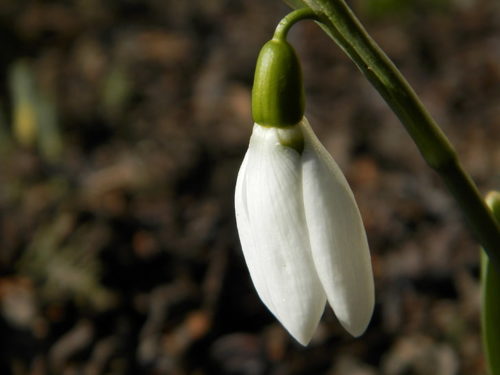
Botanical Description:
- Long-term multi-year culture. Plant height 10-20 cm, grown by groups.
- The flowering time is early spring or end of February, after melting snow. Flowers with dowel flowers-bells of milky white color. The perianth consists of 15-30 cm petals in length. Blossom duration - up to 1 month.
- Snowdard flowers are barely lit delicate fragrance.
- Linear leaves, with a width of 0.5 to 3 cm, stretched up to 20 cm.
- A snowdrop bulb consists of scales, in diameter from 2 to 3 cm, depending on age. In the sinuses of scales form "kids" - the kidney, of which a new bulb is formed. The bulb "sleeps" in the ground all nine months, absorbing the useful substances from the soil. When the first spring, warm days, she awakens and gives rise to a new plant.
- Frost-resistant culture, adapts to any bad weather, resistant to diseases and pests.
- Snowdrop's fruit is a round box with small shifts of dark color. Seeds are attractive to ants that distribute them to other territories.
Varieties of snowdrops
Among the diverse types of Galantus are the most common:
- Snowdrops white - Popular view. The plant is low, up to 15 cm in height. Flowers with snow-white flowers, which are framed along the edge of a greenish rim. Growing groups, forming luxurious snow-white glades. Flowers for April. In the natural environment grows in the Carpathians. Based on this species, many beautiful hybrid varieties were derived: Flora Peno, Lady Elveninion with terry flowers, Lyutnescenes, Ophelia and others.
- Snowdrop of Elvis - Tall grade, up to 25 cm in height, mainly grows in Asia. Leaves wide, flowers spherical. This is the earliest view of Snowdrops, which appears in February. Differs endurance and attractive appearance.
- Snowdrop Caucasian - Plant with a height of about 18 cm, natural habitat - Mountain areas of Transcaucasia. Coloros reaches sizes up to 6 cm.
- Snowdrop of broad-sized - The peculiarity of this species is that Galantus is multiplied by a bulb. The bulb itself has large dimensions up to 5 cm in diameter. Plant leaves are wide up to 4 cm in width, rich-green color, up to 25 cm long. Flower white, with green dot. The flowering period of the Snowdrop of the Slavicizer - May, lasts up to 20 days. Most often grows in the northern regions.
- Snowdrop of Byzantine - Right from the coast of Bosphorus, grows among shrubs, blooms in the autumn period.
- Folded garden snowdrop - Fragrant view, flowering time April-March, is common in the Crimean coast.
Attention! All types of hanalen are under protection, some species are rare and disappearing and are listed in the Red Book. The collection and sale of snowdrops of these species is illegal and faces the fine.
Planting snowdrops at the country area
For planting snow bells on the summer site, the end of summer or early autumn is suitable. If the autumn was warm, then you can land the bulbs until November. By acquiring the bulbs of Galantus, pay attention to their appearance. They should be dense, elastic, heavy, with a solid protective sheath, without defects, damage and signs of growth. Landing material with new, developing "kids" after landing in the soil will start and give rise to the plant. If the purchased bulbs are not planned immediately to landing, they are stored in sawdust or chips to prevent their breathing.
How to choose a place landing snowdrops
Snowdrops are the symbol of the arrival of the first warm and sunny days, so it is necessary to plant them on the sunny section of the garden or in a half, next door to trees and shrubs. Often the plant is used for group landings on flowerbeds, in mountaineering for the creation of spring compositions. It is worth noting that the flowering period and the intensity of the growth of snowdrops largely depends on the variety and proper plant care, and not from the selected place for growing primroses. It is not recommended to use low-rise territories for landing, with clay soil, where the moisture is formed after melting snow, destructive for the root of the plant. An ideal soil for snowdrop growth is a drained, lightweight and loose soil, which is well transmitting moisture.
Rules landing on bulbs Snowdrop
Sauce the bulbs of snowdrops will not be difficult for even novice flowers:
- For planting, the ground is fringed on the site and places the bulbs into the ground to a depth of 2-3 times greater than the bulb. It should be noted that the bulb of hanalen itself regulates the landing depth, as it forms new subsidiaries in the desired depth.
- The bulbs are planted with rows of 10-30 plants or a group at a distance of 2 cm. The closer the planting of the bulbs, the thicker and more lisher will look like blooming snowdrops in the spring.
- When planting the bulbs in the fall, the soil should be closed with peat, sawdust. If the plants rise under the trees, fallen leaves protrude as mulch.
- In one place the plant grows up to 6 years. Then requires its transplant to a new place. Snowdrops are poorly transferred, especially if they are disturbed during flowering. Therefore, the transplant of Lukovitz Galantus is carried out during the period of vegetative rest when the ground part of the plant is dying.
Reproduction of snowdrops
Snowdrops multiply on bulbs kids.
- To divide the plant, it is necessary to choose a period when it has already been hung, but the leaves have not been dry. During this period, the maternal bulb forms 1-3 subsidiaries.
- The bulb is digging and separated by "kids", without cleaning them from the soil. Sections are treated with activated carbon powder.
- Young bulbs should be immediately planted for a new place, since the ridicated planting material is not suitable for landing.
- If the plant has reached the age of 6, it should be transplanted and separated by subsidiaries.
Also, Galantus breeds seeds. After the ripening of seeds, they are sighable into the ground, a depth of up to 2 cm. The first bloom should be expected only after 3-4 years. Snowdrops are perfectly multiplied by self-sowing.
Care for snowdrops
Fragile, at first glance Snowdrops, are hardy and unpretentious culture:
- Undercumation of snowdrops with potash and phosphoric fertilizers stimulate their growth and extend the duration of flowering. Soil should be fertilized late autumn or early spring.
- Natural moisture source for hanalen - melting water. In case the snow melted too early or outlined and warm spring, an additional watering of plants is allowed.
- After flowering, the leaves of the plant are not removed, allowing the bulb to gain strength. The energy of the bulb accumulates with the help of the land part of the plant.
- With proper care and feeding plants, snowdrops can be admired every spring over the years. The plant independently multiplies by self-sow.
Growing snowdrops in the garden: possible problems
Despite the unpretentiousness in the cultivation of primroses in the country area, often flowerflows face such problems as:
- Snowdrops do not bloom. The main reason for the absence of galantus flowering is the damage to the bulbs. It can damage insects, rodents or she was subjected to rotting. The main pests of snowdrop bulbs are moles, mice, caterpillars, slugs and nematodes of bulbous. The bulb damaged by pests loses its strength and does not bloom. To correct the situation, it should be digging and cutting the damage areas. Cutting places should be treated with ash or activated carbon powder. After healing outdoors, the bulb is sent back to the ground.
- Another reason for the lack of flowering is the exhaustion of the soil. So that the plant resumes flowering, it is necessary to feed it with a potash-phosphoric fertilizer.
- Deformation of leaves. A minor damage to several snowfoot leaves can be associated with mechanical injury of foliage during germination through the soil. If all the leaves are strongly deformed - this is the signal of the presence of a viral disease.
- Dark spots or wet fluffy falling leaves - Infection of bulbs by bacterial and fungal disease.
Diseases of snowdrops
Like all plants, snowdrops can be infected with fungal or viral infection:
- Viral disease. Damaged snowdrop leaves are covered with dents, tubercles, acquire a yellowish or pale green shade. Finding this disease, the instances affected by the virus should be removed from the landing so that the virus does not spread to neighboring plants.
- Fungal infections. The appearance on the leaves of a gray fluffy fluffy, black dots or dimming on the sheet plates are the main signs of the presence of fungal infection. The reason for infecting the plant with fungal infection is dampness and no frost in winter. Infected plants are to be destroyed, the remaining copies are treated with fungicides.
- Chlorosis. The lack of nutrients in the soil leads to such a disease as chlorosis. The ground part of the plant suffers from chlorosis: yellow and pale leaves. To avoid disease, it is necessary to provide good drainage and feeding of the soil.
Snowdrops look great in group landings, creating a snow-white cloud against the background of another sleeping garden. Plants complement flower arrangements on flowerbed from other bulbous, blooming spring. Beautifully looks like snow bells with hyacinths, daffodes, crocuses and tulips. They are able to create a fabulous spring atmosphere and fill the garden with a gentle aroma of early spring, recalling that winter leaves and the long-awaited spring comes.
Photo of snowdrops

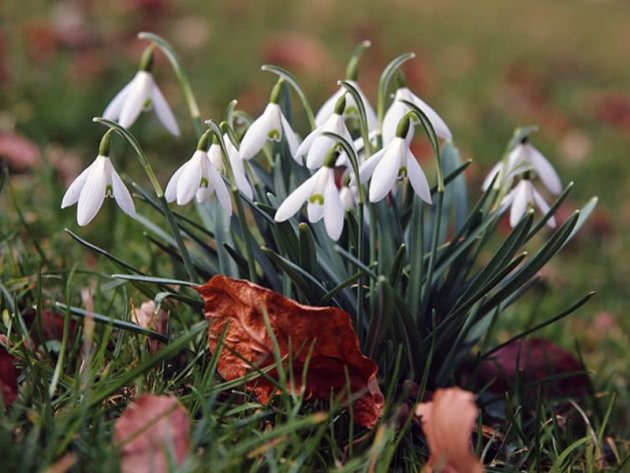

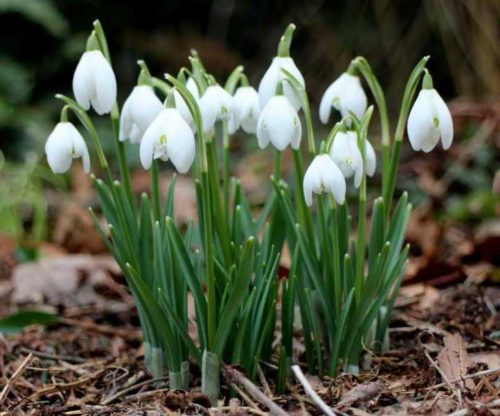
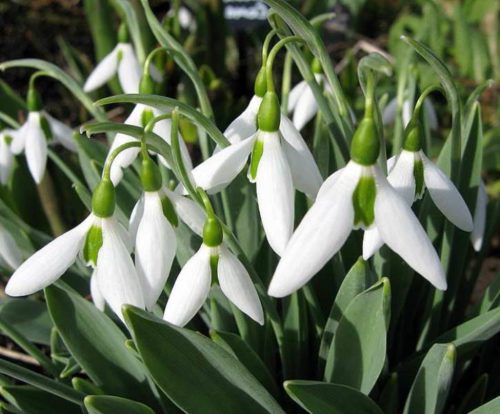
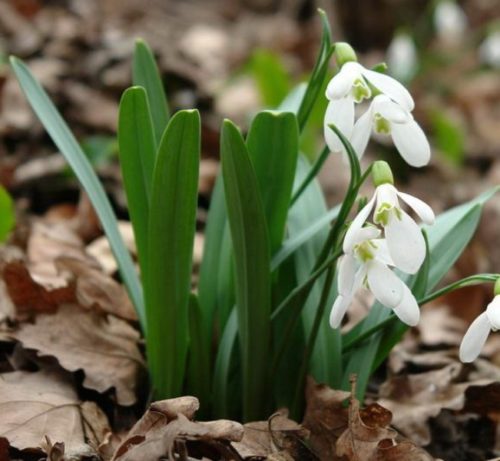

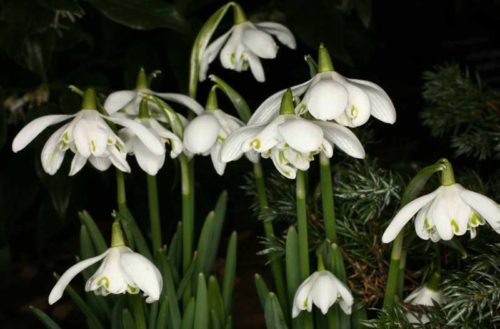
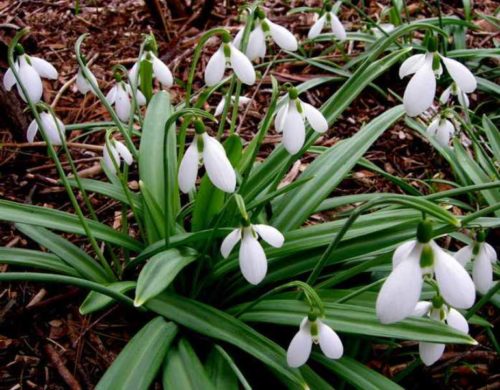
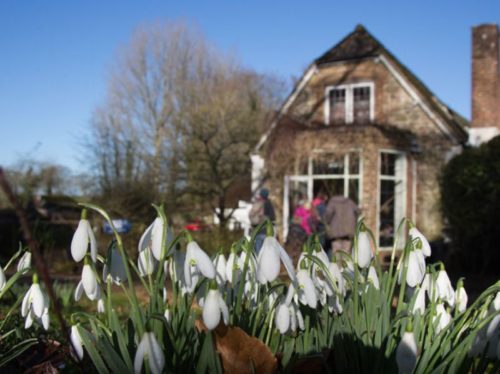
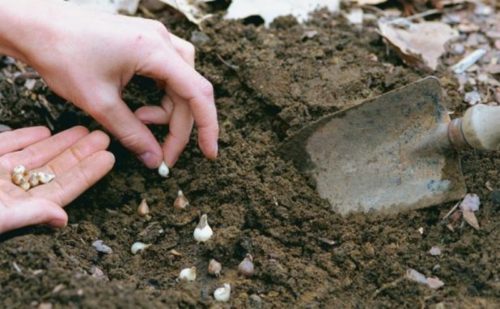
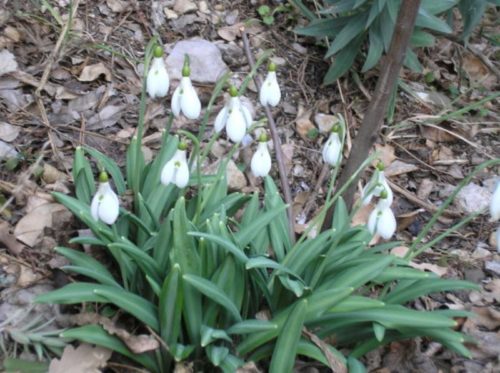
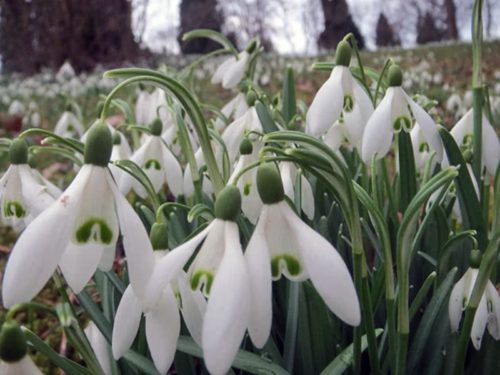

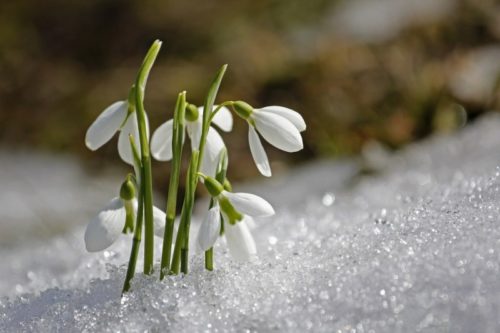
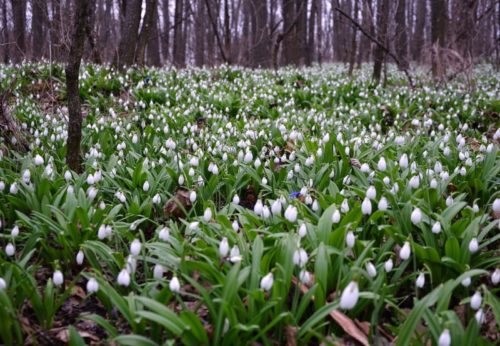
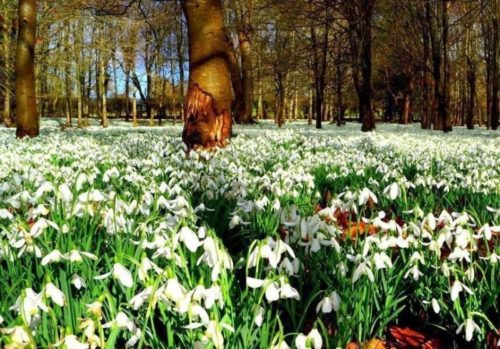
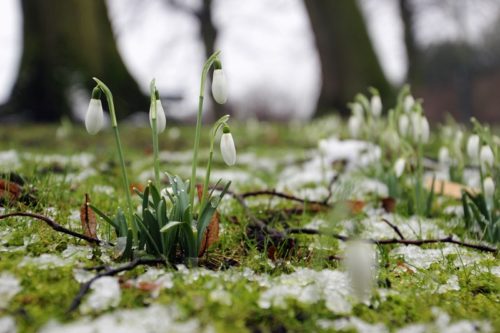
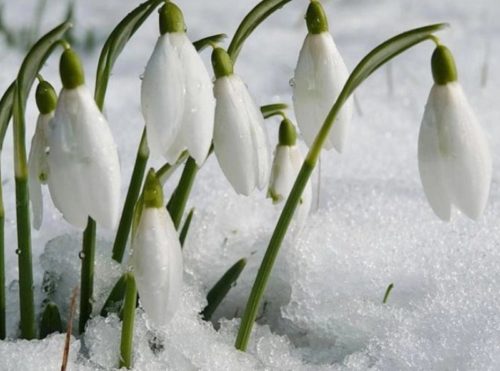
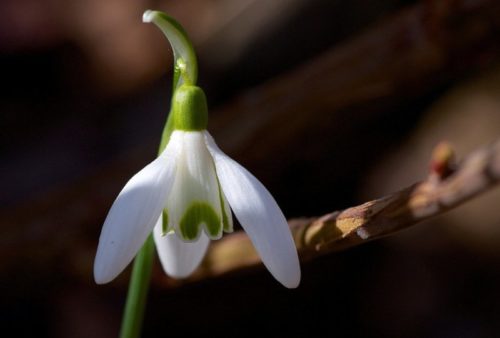
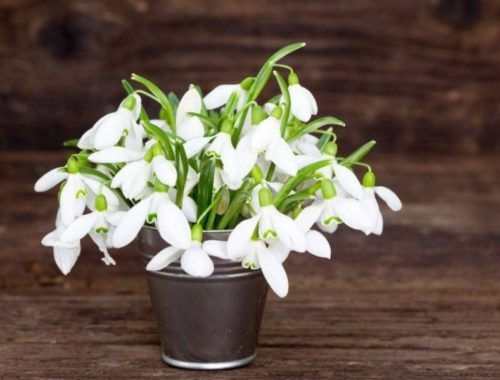












 Start a discussion ...
Start a discussion ...